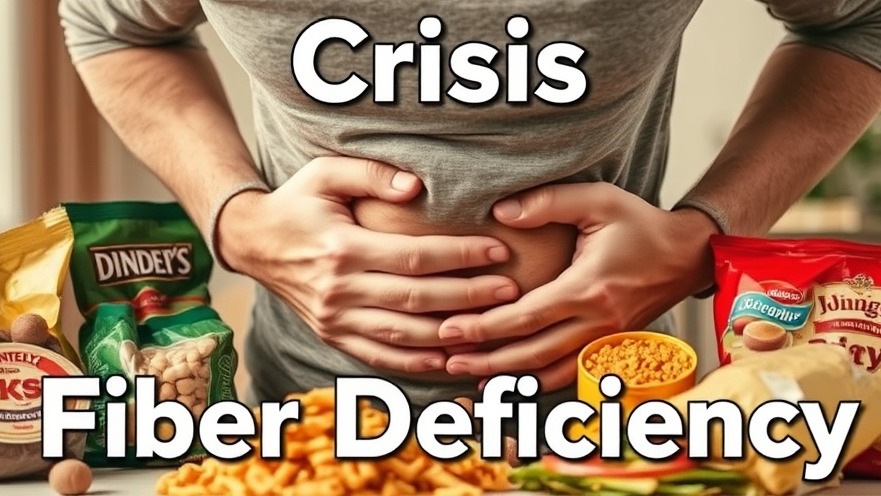
Fiber, often overshadowed by macronutrients like protein in our dietary discussions, plays a crucial role in maintaining optimal health. When fiber intake falls below recommended levels, the body undergoes several significant changes that can impact both short-term comfort and long-term health outcomes. This comprehensive article explores what happens when fiber is lacking in your diet and why addressing this nutritional gap should be a priority.
What is Dietary Fiber?
Dietary fiber is a type of carbohydrate found in plant foods that the body cannot digest. It passes relatively intact through the digestive system, providing numerous health benefits along the way. There are two main types:
Soluble fiber: Dissolves in water to form a gel-like substance that slows digestion and helps regulate blood sugar and cholesterol levels.
Insoluble fiber: Doesn't dissolve in water and adds bulk to stool, promoting regular bowel movements and preventing constipation.
Recommended Daily Fiber Intake
According to certified nutritionist and biologist Anastasiia Kaliga, recommended daily fiber intake varies by age and sex:
Women 50 years or younger: 25 grams
Women over 50: 21 grams
Men 50 years or younger: 38 grams
Men over 50: 30 grams
Children (2+ years): 14 grams per 1,000 calories consumed
Toddlers (12-23 months): 19 grams
Consequences of Fiber Deficiency
Digestive System Impact
When fiber intake is insufficient, the digestive system is often the first to show signs of distress:
Constipation: Without adequate insoluble fiber to add bulk and softness to stool, bowel movements become difficult and infrequent. This can lead to straining, discomfort, and potentially hemorrhoids.
Irregular Bowel Movements: The transit time of food through the digestive tract slows significantly, disrupting the body's natural elimination rhythm.
Bloating and Abdominal Discomfort: Paradoxically, while fiber can initially cause bloating when suddenly increased, chronically low fiber can lead to dysbiosis (imbalance of gut bacteria) that produces excess gas and bloating.
Diverticulosis Risk: Prolonged constipation from low fiber intake increases pressure within the colon, potentially leading to the formation of diverticula (small pouches) in the intestinal wall. When these become inflamed, the painful condition diverticulitis can develop.
Gut Microbiome Disruption
One of the most significant yet invisible consequences of fiber deficiency occurs within the gut microbiome:
Reduced Microbial Diversity: Fiber acts as a prebiotic, feeding beneficial gut bacteria. Without adequate fiber, these helpful microbes diminish in number and diversity.
Increased Inflammatory Potential: A disrupted microbiome can lead to increased intestinal permeability ("leaky gut"), allowing bacterial components to trigger systemic inflammation.
Compromised Immune Function: Since approximately 70% of the immune system resides in the gut, microbiome disruption can impair immune responses.
Metabolic Consequences
Fiber deficiency extends beyond digestive issues to affect overall metabolism:
Blood Sugar Dysregulation: Without soluble fiber to slow carbohydrate absorption, blood glucose levels can spike more dramatically after meals, increasing insulin demand.
Elevated Cholesterol Levels: Soluble fiber helps bind cholesterol in the digestive system, preventing its reabsorption. Low fiber intake is associated with higher LDL ("bad") cholesterol levels.
Increased Cardiovascular Risk: The combination of higher cholesterol, inflammation, and blood sugar irregularities contributes to increased cardiovascular disease risk.
Weight Management Challenges: Fiber creates a sense of fullness (satiety) that helps regulate appetite. Without adequate fiber, overeating becomes more likely as hunger signals occur more frequently.
Long-Term Health Risks
Chronic fiber deficiency is associated with an increased risk of several serious health conditions:
Type 2 Diabetes: The impact on blood sugar regulation makes developing insulin resistance more likely over time.
Colorectal Cancer: Multiple studies have linked low fiber intake with increased colorectal cancer risk, possibly due to longer exposure of the intestinal lining to potential carcinogens in stool.
Cardiovascular Disease: The combined effects on cholesterol, inflammation, and blood pressure contribute to heart disease risk.
Obesity: Without fiber's satiety-promoting effects, caloric intake often increases, contributing to weight gain.
Addressing Fiber Deficiency
Increasing fiber intake should be gradual to allow the digestive system to adapt. Excellent sources of dietary fiber include:
Legumes: Lentils, black beans, chickpeas
Whole Grains: Quinoa, oats, brown rice, whole wheat
Vegetables: Broccoli, Brussels sprouts, leafy greens
Fruits: Berries, apples, pears (with skin)
Nuts and Seeds: Chia seeds, flaxseeds, almonds
For those struggling to meet fiber requirements through diet alone, fiber supplements are available, though whole food sources provide additional nutrients and should be prioritized.
Balanced Nutrition Approach
While protein has dominated recent nutrition discussions, particularly in fitness communities, a balanced approach recognizes that all nutrients play essential roles. As Kaliga notes, adequate protein is indeed crucial for muscle repair and immune function, but this shouldn't come at the expense of fiber intake.
The ideal modern diet incorporates sufficient protein for muscle maintenance and metabolic health while ensuring adequate fiber for digestive health, microbiome support, and disease prevention.
Conclusion
Fiber deficiency represents a silent nutritional crisis in many modern diets. The consequences extend far beyond occasional constipation, potentially contributing to serious long-term health conditions. By understanding fiber's critical role and consciously incorporating fiber-rich foods into daily meals, we can support optimal digestive function, metabolic health, and disease prevention. In the chorus of nutritional priorities, fiber deserves a leading role alongside more frequently discussed nutrients like protein.
 Add Row
Add Row  Add
Add 




Write A Comment